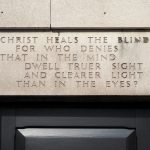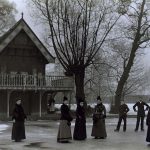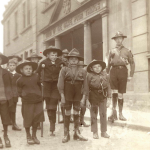With a background in textiles and weaving myself, looking through the photographs of objects held by the Museum of Liverpool, I was struck by the beauty of the baskets that were produced by Liverpool School for the Blind. In an age of websites like ‘Etsy’ and ‘Not On The High Street’ we value our crafts people and makers highly, and longingly wish to own a ‘one of a kind’, hand-made item. I was interested to hear from Kerry her thoughts on the objects made by the School and some of the memories of one of our researchers in Liverpool:
If we think about basket weaving in the context of disabled people in contemporary times and the role of the institution, we rarely have this more positive perspective.
“I really liked the large, rectangular laundry basket with the name of the school printed on the side. It was so beautiful yet sturdy and I felt that I had under estimated the hard work and skill that went into some of the objects they made. One of our researchers said her mum had shared a memory with her, that the objects made at the adult branch of the school went on display in the ‘shop’ which could be seen from the road. Her mum used to walk past dreaming of owning something; they were sought after objects and out of her price range”. Kerry Masshedar-Rigby

Black and white photograph showing products for sale made by students from the Hardman Street School for the Blind. Copyright John Breen, in the collection of the Museum of Liverpool MMM.2003.115
But if we think about basket weaving in the context of disabled people in contemporary times and the role of the institution, we rarely have this more positive perspective. I therefore did a bit of research into where the term “basket case” might have come from. I was surprised to discover it actually appears to have it’s origins in the First World War. This bulletin was issued by the U.S. Command on Public Information in March 1919, on behalf of Major General M. W. Ireland, the U.S. Surgeon General:
“The Surgeon General of the Army … denies … that there is any foundation for the stories that have been circulated … of the existence of ‘basket cases’ in our hospitals.”
This bulletin was reported in many U.S newspapers and they also explained what was meant by the term:
“By ‘basket case’ is meant a soldier who has lost both arms and legs and therefore must be carried in a basket”
The route of this term was very different to what I expected as I had assumed it had derived from Institutions giving disabled people basket weaving as something to do to occupy them. In the 1970s and 80s these sort of craft activities sometimes even replaced providing a basic education. This made me wonder whether we have also misappropriated the term because of the use of this activity within institutions with the perception that this is all people were capable of doing.
This is one of the reasons I find History of Place such an exciting project. It gives us an opportunity to look at history through a different lens. Quite clearly those crafts people from Liverpool School of the Blind were skilled makers. Let us re-examine history and credit them as such. They were the “Etsy” producers of their day, not people to be written off because of their impairment.










I’m so pleased you have research ‘basket making’ I have a mixed relationship with the craft. I’m registered blind and also went to a ‘special school’ in Coventry in the 70’s. Many of us were expected to do ‘canework’ at CSE. The teacher who taught us was totally passionate about the subject – all her students got grade 1 CSE’s (I don’t think anyone ‘failed’). At the time of weaving baskets, trays, plantpot holders sewing baskets etc, I din’t appreciate it for the beautiful craft it is. We just did it – sometimes under duress – because we were told to and we were living under an extremely strict ‘somewhat Victorian institutionalised regime. Now as an adult I so wish I had kept this craft up. It is a skill and products created last (I’ve still got one of the wastepaper baskets I made when I was 16, I’m now 53). So I think whilst there are negative associations disability wise, there is also scope to reinevnt and reclaim. I love story telling, song and there are so many cultures who’ve sat and worked on craft activities whilst sharing stories, traditional folk or ‘everyday experience’. Craftwork can generate community. Perhaps we should celebrate the skill we all had rather than always looking to the more difficult aspects of living in a world that in the 70’s wanted to ‘so call ‘normalise’ But I’m mindful, we can reclaim but we must not forget the past and this is why History of Place is such an important project. Our stories must be protected and shared so a greater understanding of terms such as ‘basket case’ are not lost.